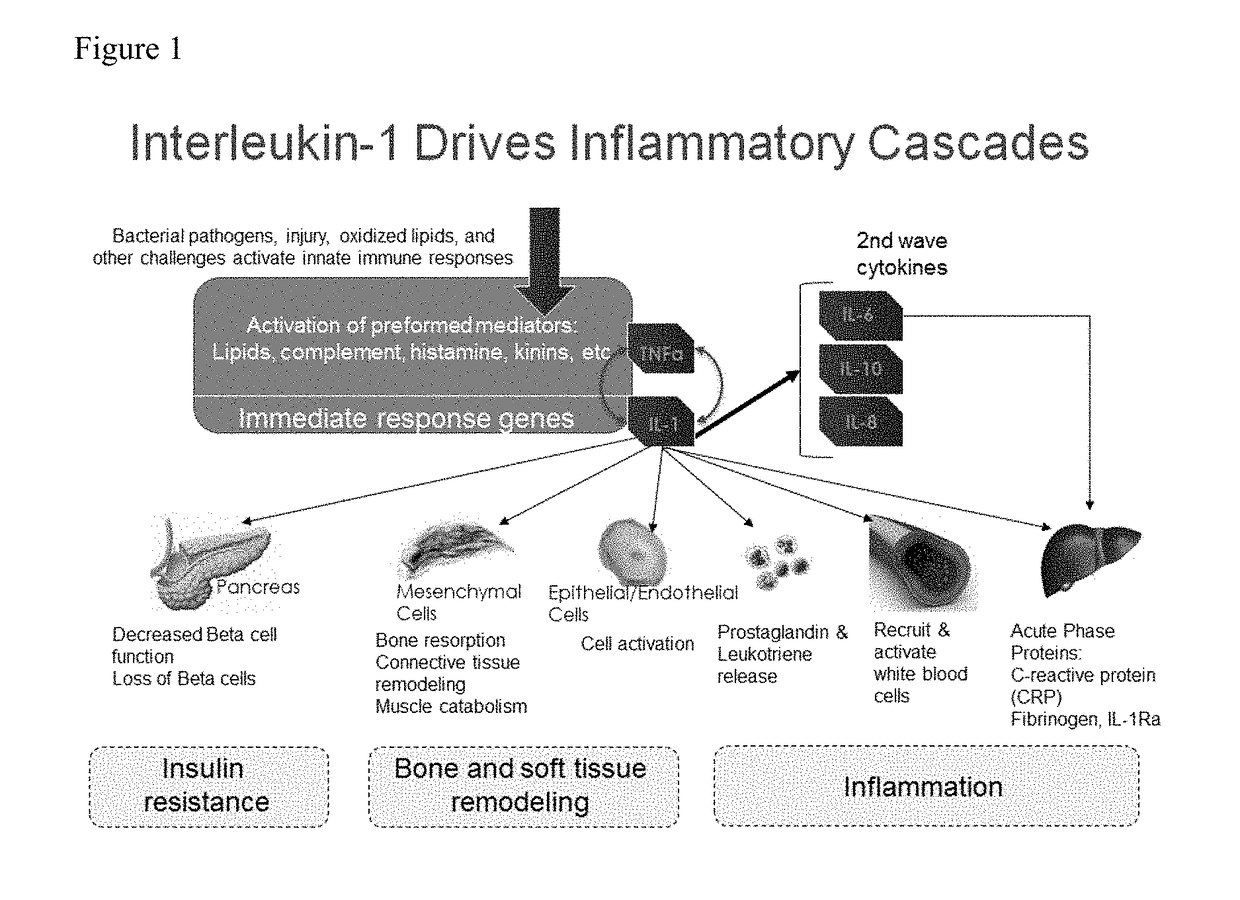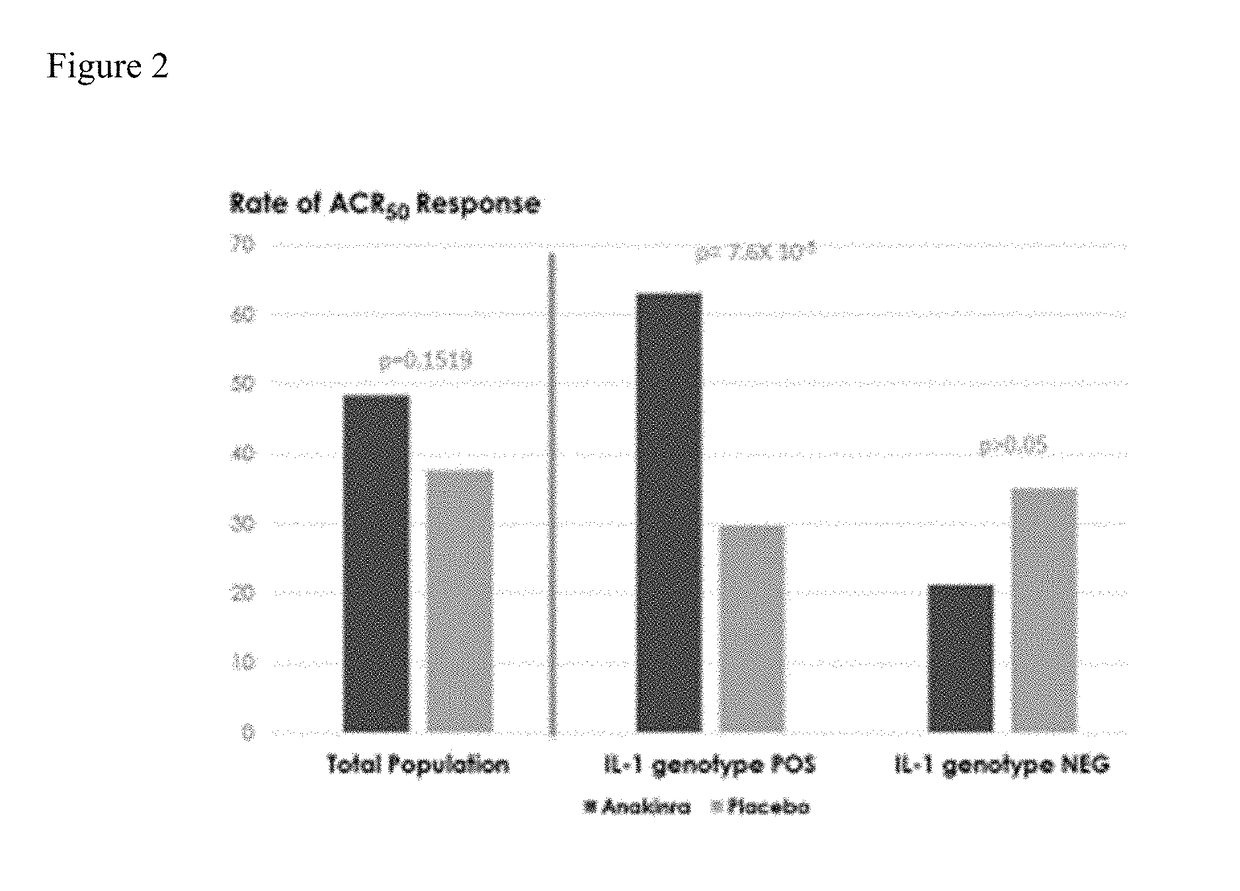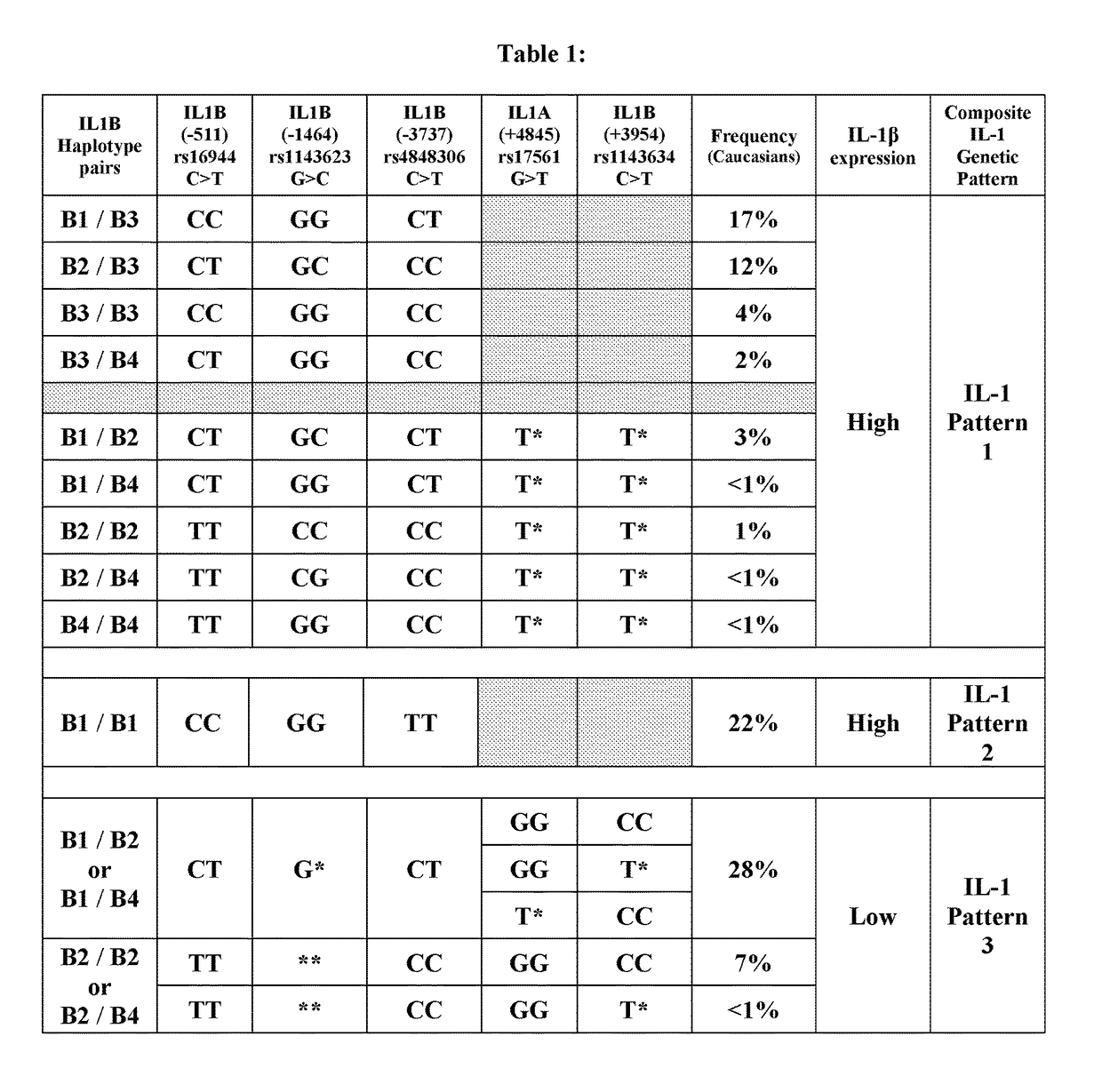Methods for predicting response to treatment
a treatment response and treatment technology, applied in the field of treatment response prediction methods, can solve the problems of significant risk factors affecting healthful longevity, and achieve the effects of reducing il-1 directed inflammation, reducing drug toxicity and adverse events, and improving clinical benefit-risk appraisal
- Summary
- Abstract
- Description
- Claims
- Application Information
AI Technical Summary
Benefits of technology
Problems solved by technology
Method used
Image
Examples
example 1
Individual Patient Responses to an Inflammatory Challenge is Dependent Upon His / Her Composite IL-1 Genotype Pattern
[0151]In this example, subjects' inflammatory responses to a standard activator of inflammation were correlated with their Composite IL-1 Genotype Pattern. Here, 645 female subjects were screened for entrance criteria: (1) between the ages of 20 to 35 and (2) Fitzpatrick skin tone I to III. Subjects were genotyped and twenty to thirty subjects for each of Composite IL-1 Genotype Patterns 1 to 3 were selected for inclusion in the test. The selected subjects were exposed to an inflammatory challenge, i.e., ultraviolet (UV) irradiation (a standard activator of inflammation). Subjects were exposed to increasing doses of UV irradiation and the minimal UV dose needed to produce clinically measurable inflammation of the skin was determined by standardized examiners and independently assessed by spectrophotometric readings of the skin. The scores for each individual were expres...
example 2
Individual Patient Responses to a IL-1 Blocking Drug is Dependent Upon His / Her Composite IL-1 Genotype Pattern
[0154]In this example, subjects' responses to a recombinant IL-1 receptor antagonist (IL-1RA) were correlated with their Composite IL-1 Genotype Pattern. IL-1 biological activity is a function of the balance between the pro-inflammatory agonists IL-1α and IL-1β and the anti-inflammatory protein, IL-1RA. Human recombinant IL-1RA is approved for clinical use for treating multiple diseases, including rheumatoid arthritis.
[0155]In a randomized controlled trial for treating rheumatoid arthritis, subjects were administered the recombinant IL-1RA anakinra (150 mg / day) or a placebo. A positive response was defined as a reduction of at least 50% in the number of swollen joints by week 24 (American College of Rheumatology's 50% response; ACR50). The subjects' positive response rate to anakinra administration was 48% (44 positive responses among the 91 subjects); this positive response...
example 3
Individual Patient Responses to a Botanical Composition that Reduces IL-1 Expression is Dependent Upon His / Her Composite IL-1 Genotype Pattern
[0158]In this example, subjects' responses to an IL-1-inhibiting botanical composition were correlated with their Composite IL-1 Genotype Pattern. A composition of botanicals was developed which has the ability to inhibit IL-1β gene expression in human mononuclear cells. Selected candidate ingredients were also screened for inhibition of mediator production downstream of IL-1β. The primary IL-1-inhibiting ingredient was a rose hips extract. Four secondary ingredients were selected for downstream mediator inhibition.
[0159]Overtly healthy adult subjects with CRP levels of 2 mg / L or greater qualified for participation in this randomized, controlled clinical trial. Subjects were genotyped for composite IL-1 genetic patterns. Prior to randomization, subjects with Pattern 1 or 2 were sorted into the “Positive for IL-1” genotype category and subjects...
PUM
| Property | Measurement | Unit |
|---|---|---|
| concentration | aaaaa | aaaaa |
| concentration | aaaaa | aaaaa |
| concentration | aaaaa | aaaaa |
Abstract
Description
Claims
Application Information
 Login to View More
Login to View More - R&D
- Intellectual Property
- Life Sciences
- Materials
- Tech Scout
- Unparalleled Data Quality
- Higher Quality Content
- 60% Fewer Hallucinations
Browse by: Latest US Patents, China's latest patents, Technical Efficacy Thesaurus, Application Domain, Technology Topic, Popular Technical Reports.
© 2025 PatSnap. All rights reserved.Legal|Privacy policy|Modern Slavery Act Transparency Statement|Sitemap|About US| Contact US: help@patsnap.com



